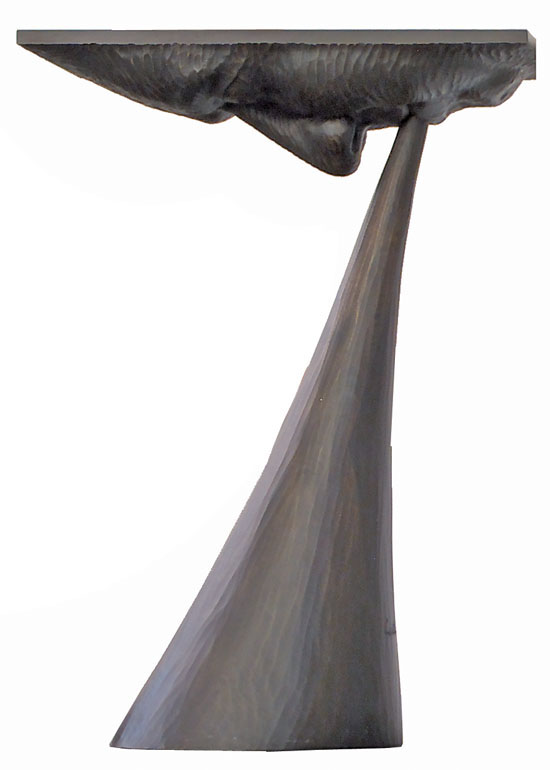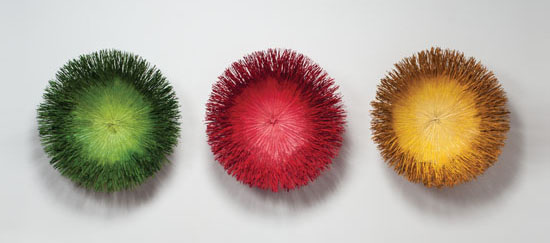Art, architecture and the environment are upcoming topics for guest bloggers on arttextstyle.com over the next few months.
In February, architect David Ling will write about studying glass at Haystack Mountain School of Craft in Maine a follow up to Hisako Sekijima’s 2013 blog about teaching basketry in the same session. Ling founded David Ling Architects in 1992 after training with Richard Meier, I.M. Pei and Emilio Ambasz. Ling has held teaching positions at Parsons School of Design and University of Nuremburg and has served on design juries at Interiors Magazine, Harvard Graduate School of Design and Columbia University. The essence of Ling’s architecture is the artistic integration of space, form, light and function enriched by materiality. Among his design projects is the home/office of browngrotta arts.
Artist Wendy Wahl will write three posts about art, environment and ideas — the first to appear in mid-February. Wahl‘s work has been exhibited internationally and is in a number of private and public collections including the Cooper-Hewitt Museum, New York and the Museum of Art, Rhode Island School of Design. Her work has been the subject of exhibitions at the Grand Rapids Art Museum, Michigan, the Newport Art Museum, Rhode Island and the Fuller Craft Museum in Massachusetts.
In March, artist Gyöngy Laky’s Process Notes; Red in Art and Life will also appear on arttextstyle. Laky’s sculptural forms have been exhibited in museums and galleries throughout the United States. Internationally, her work has been exhibited in France, Sweden, Italy, Holland, Switzerland, Hungary, Lithuania, Colombia, the Philippines, China, with one-person exhibitions in Spain, Denmark and England. Her outdoor site-specific installations have been exhibited in the US, Canada, England, France, Austria and Bulgaria. From April 26th to May 5, 2014 Laky’s baskets and wall sculpture will be included in Of Two Minds; Artists Who Do More Than One of a Kind.

In March, readers will learn about the creative journey Dutch artist, Marian Bijlenga has taken, as she muses on 30 years of work. Bijlenga’s “spatial drawings “of horsehair, paper, thread and fish scales have been exhibited worldwide. Her work is represented in major museum collections including LongHouse Reserve; The Museum of Art & Design; The Craftmuseum, Finland; Musée des Beaux-Arts et de la Dentelle, Calais, France; and the Stedelijk Museum, Amsterdam. Bijlenga’s wall works and glass sculpture will be featured this April in Of Two Minds; Artists Who Do More Than One of a Kind at browngrotta arts.






Guest Post: David Ling at Haystack School of Crafts, Deer Isle, Maine
photo by David Ling
Nestled into the stoney evergreen clad ledge that seems to slip effortlessly into the atlantic off the coast of Deer Isle Maine, Haystack was to prove a desirable radical contrast to New York City, business and routine.
1000 miles, six ferries, two weeks of glass workshop, 42 haystack meals (in addition to the 10 lobster rolls en route) no cell connection and barely any online connection, the contrast was complete.
photo by David Ling
Initially drawn to haystack for its architectural and landscape setting as well as the reputation I heard over the decades of serving collectors and working with the artisans, I wanted to experience haystack for myself.The link between my architectural practice and haystack is glass. I love glass. With my Modernist Bauhaus background, I grew to appreciate and love glass. Starting with Paul Scheerbart, Bruno Taut, and the Crystal chain letters, glass took on utopian mythical proportions. Studying in Crown Hall, Mies’ glass temple to architectural education, I loved watching how the translucent glass captured light and became a filter for experiencing nature. Later, after starting my own practice, I created glass windows, glass floors, glass ceilings, glass roofs, glass furniture all using
photo by David Ling
tempered, laminated, annealed, acid etched, sandblasted, fractured glass in my work. But that’s where the similarities end. The very physical act of working with glass was to prove radically different from using glass in my architectural practice. I discovered that the very process of blowing glass requires teamwork, physical participation. Working with glass I found, required both focus and a peripheral awareness of my collaborators, heat –and not just any heat but adjusting heat with time in the air, contact with the stainless steel marver, water and wood. I found the luminous fluid quality of molten glass mesmerizing. Streams, puddles and droplets of liquid light.
In contrast to the flat planar architectural applications of glass, I learned through experimentation how glass could take on other qualities in its molten state: elastic, malleable, impervious, explosive, optical. I also started relearning how to experiment, explore and return to a childlike curiosity.
photo by David Ling
While I’m not sure how haystack will affect my future work, I am compelled by not just glass itself but how light and water play with glass. On a personal level I rediscovered child like playfulness, learning to experiment and embracing trial amd error. Collaborating with my classmates was a balletic choreography involving heat and light.
Our instructor Bo Yoon was instrumental in opening my eyes to the unique qualities of glass, not just technique.
As a class, we collectively produced a glass boat, a tree draped in glass strands, mini glass grenades, water filled glass prisms and lenses. One of the most interesting thrusts of Bo’s class and when I was most interested in was the combination of the qualities of glass interacting with water and light. With my rudimentary skills and overwhelming help from Bo, teaching assistants and fellow classmates I produced a diving bell helmet out of class. With an unobstructed view of the underwater world I could bob in the Atlantic coastal waters, listening to my own breathing and waves amplified by the buoyant glass bubble.
David Ling Architect
davidlingarchitect.com